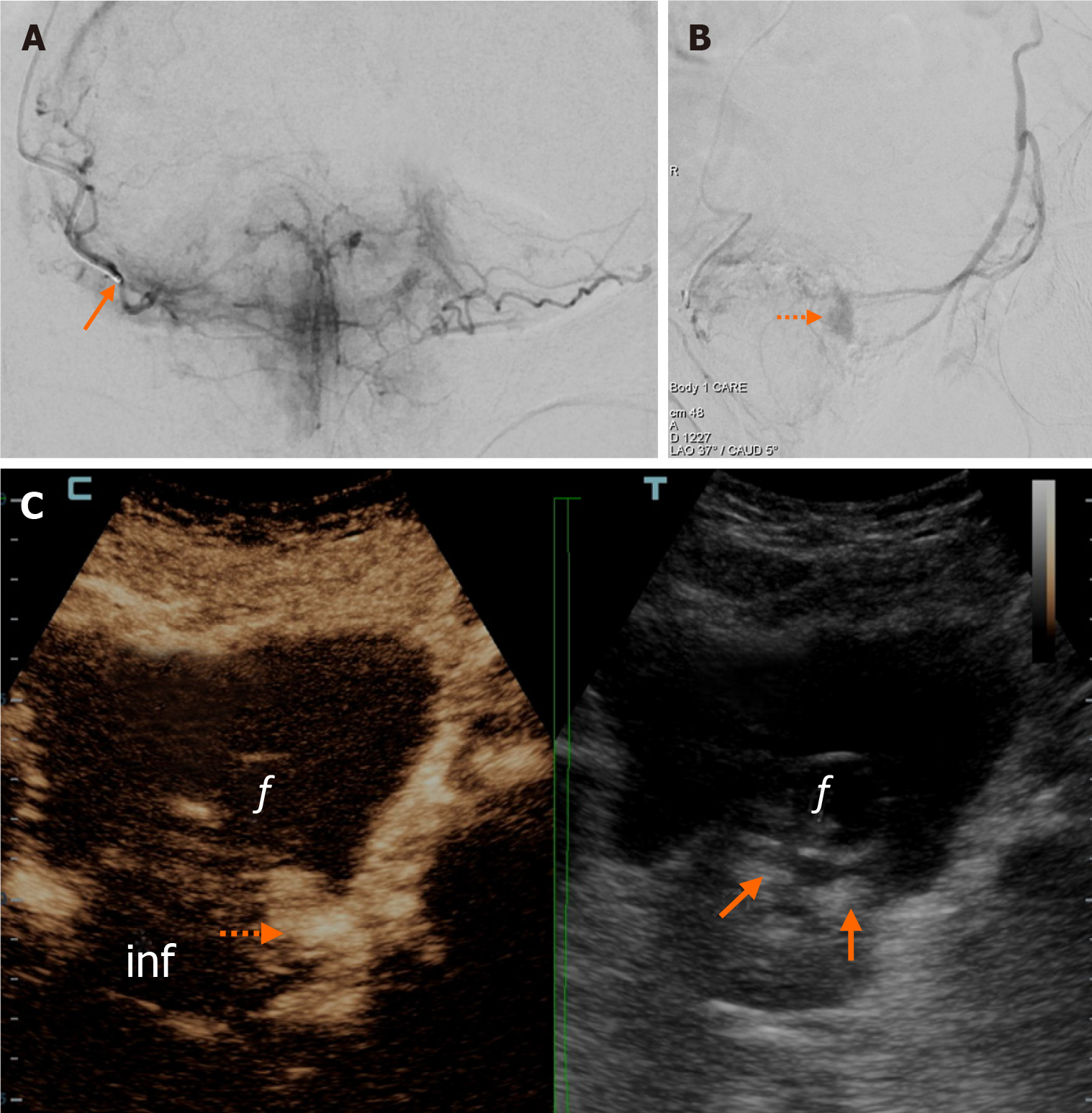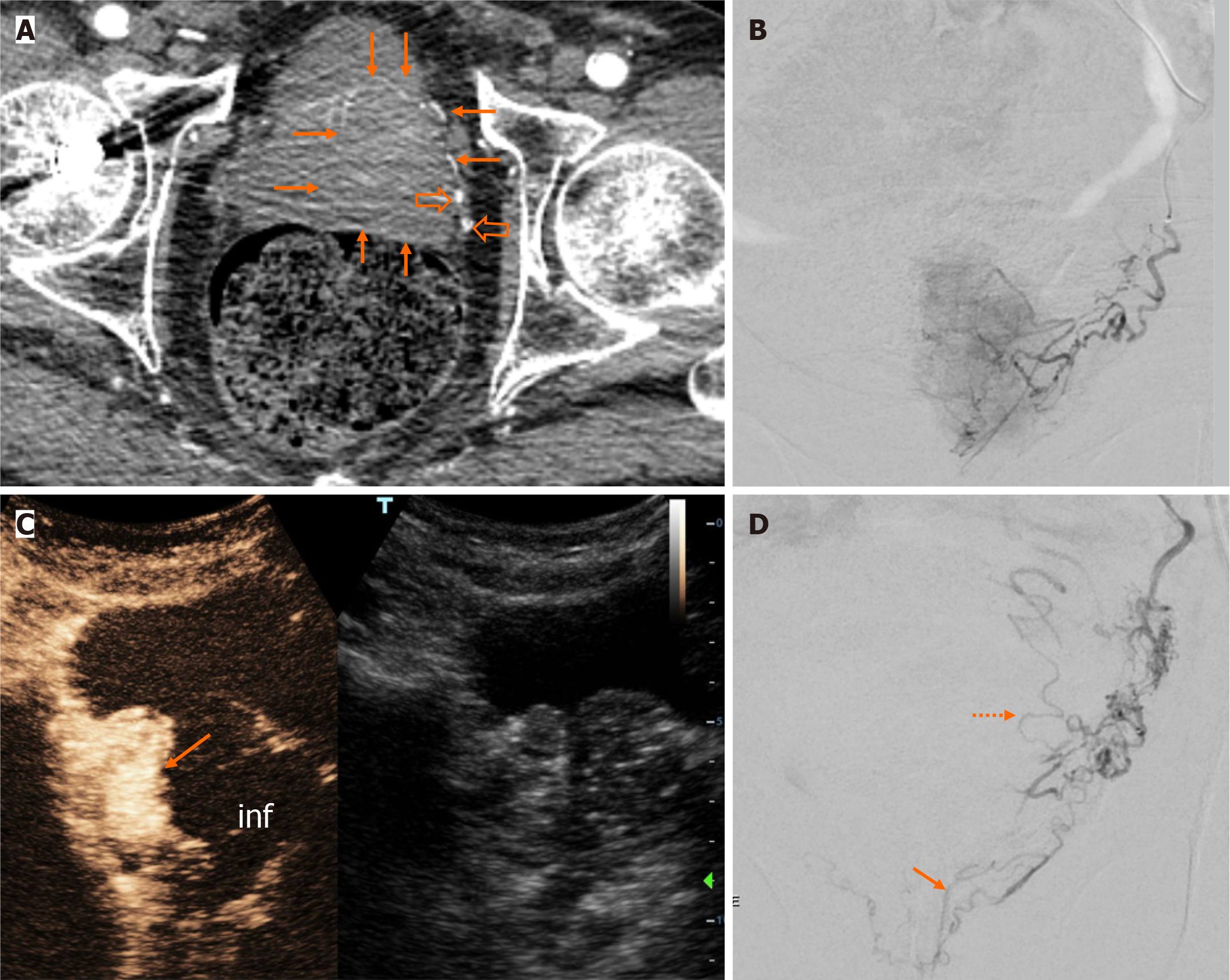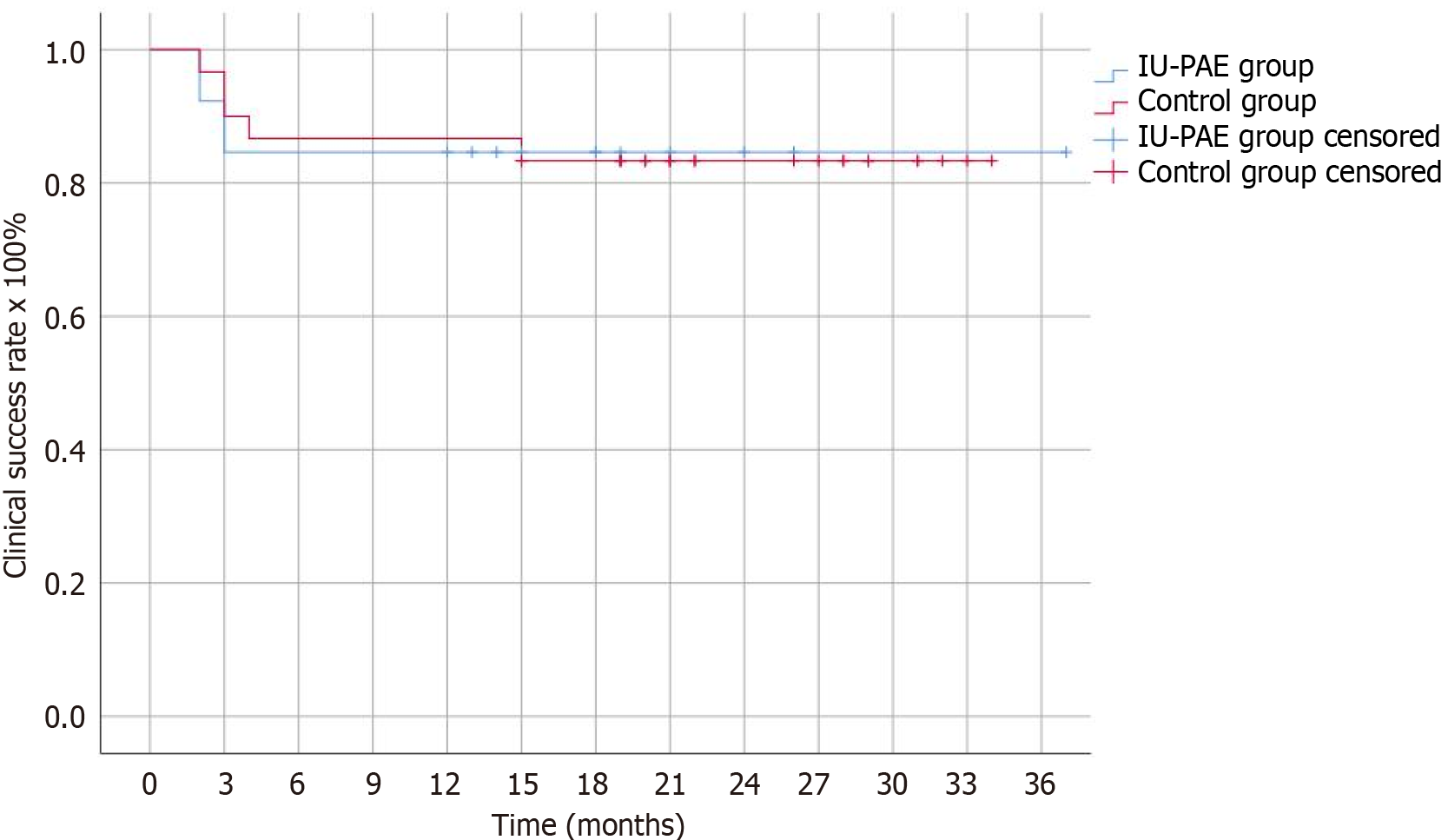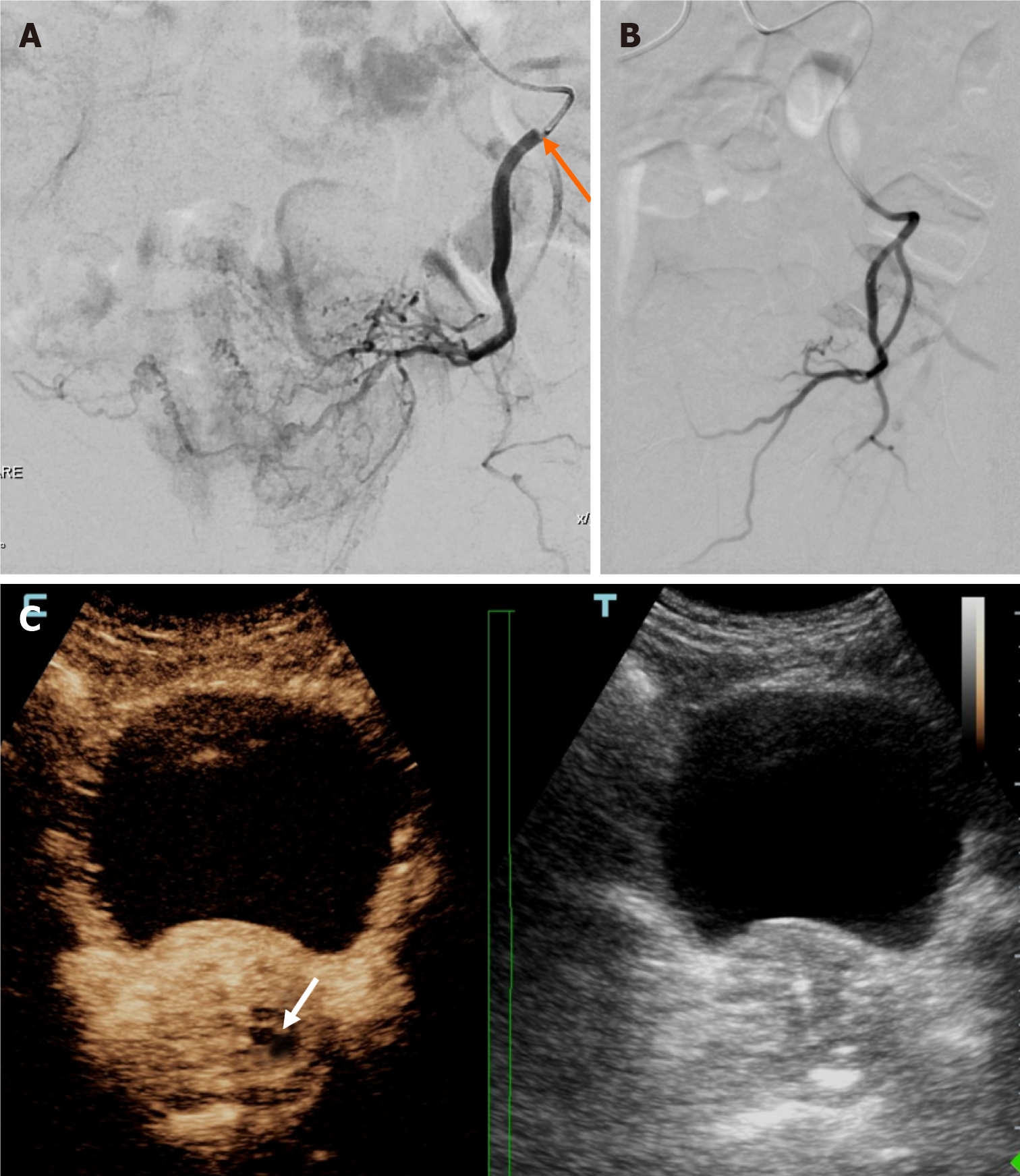Copyright
©The Author(s) 2024.
World J Radiol. Sep 28, 2024; 16(9): 380-388
Published online Sep 28, 2024. doi: 10.4329/wjr.v16.i9.380
Published online Sep 28, 2024. doi: 10.4329/wjr.v16.i9.380
Figure 1 Representative images from a clinically successful case of intentionally unilateral prostatic artery embolization (subgroup A).
A: Right prostatic artery (PA) angiogram (frontal projection) with the microcatheter tip at the extraprostatic part of the PA (arrow) shows opacification of the largest part of both prostatic lobes; B: Right PA angiogram (oblique projection) post embolization shows extensive devascularization of the prostate and a small area of residual enhancement at the left lobe (dotted arrow); C: Dual image from intraprocedural contrast-enhanced ultrasonography (contrast-enhanced image on the left, unenhanced reference B-mode image on the right) 2 minutes post embolization, confirms the absence of enhancement in the largest part of the prostate (inf), with residual enhancement only at the periphery of the left lobe (dotted arrow). Echogenic areas (arrows) in the unenhanced image of the prostate are caused by accumulation of the embolic mixture. The balloon of the Foley catheter is indicated by “f”.
Figure 2 Representative images from a clinically successful case of intentionally unilateral prostatic artery embolization (subgroup B).
A: Axial computed tomographic angiography image shows a dominant left prostatic lobe (arrows). Left prostatic artery (PA) branches (empty arrows) are also prominent compared to the right side; B: Left PA angiogram shows dense blush of the ipsilateral prostatic lobe; C: Dual image from intraprocedural contrast-enhanced ultrasonography (contrast-enhanced image on the left, unenhanced, reference B-mode image on the right) 2 minutes post embolization, shows almost complete absence of enhancement of the left lobe (inf) and persistent enhancement of the right lobe (arrow); D: Post embolization angiogram with microcatheter position near the origin of the left PA shows disappearance of the left prostatic blush and activation of anastomoses with rectal (arrow) and vesical (dotted arrow) branches.
Figure 3 Kaplan-Meier curves show no statistically significant differences in the clinical success rates between the intentionally unilateral prostatic artery embolization group and the control group (P = 0.
995). IU-PAE: Intentionally unilateral prostatic artery embolization.
Figure 4 Representative images from a clinically unsuccessful case of intentionally unilateral prostatic artery embolization (subgroup A).
A: Left prostatic artery (PA) angiogram (frontal projection) with the microcatheter tip near the origin of the PA (arrow) shows opacification of the left lobe and of the largest part of the right lobe; B: Left PA angiogram (frontal projection) post embolization, from a more proximal position, shows apparent devascularization of the prostate; C: Dual image from intraprocedural contrast-enhanced ultrasonography (contrast-enhanced image on the left, unenhanced, reference B-mode image on the right) 2 minutes post embolization, shows minimal infarction (arrow) in the left lobe.
- Citation: Moschouris H, Stamatiou K. Intentionally unilateral prostatic artery embolization: Patient selection, technique and potential benefits. World J Radiol 2024; 16(9): 380-388
- URL: https://www.wjgnet.com/1949-8470/full/v16/i9/380.htm
- DOI: https://dx.doi.org/10.4329/wjr.v16.i9.380












